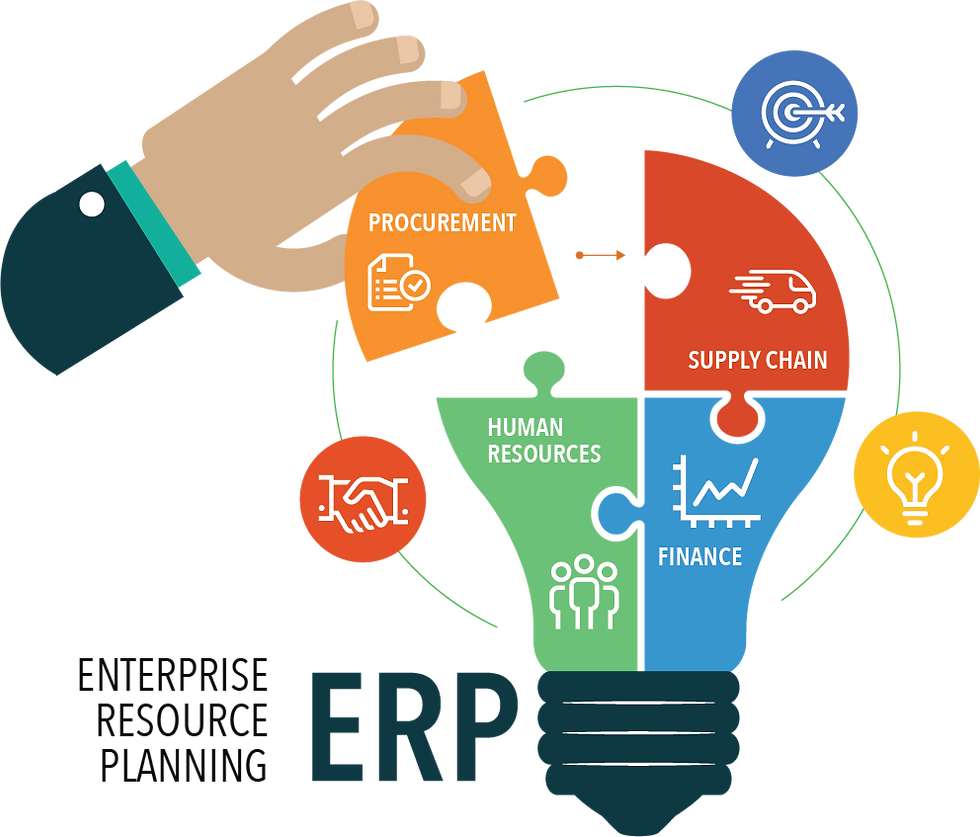ERP for Educational Institutions: A Comprehensive Guide
- solutionscakiweb
- Mar 6, 2024
- 3 min read
Educational institutions are increasingly adopting Enterprise Resource Planning (ERP) systems to streamline their operations, improve efficiency, and enhance the overall learning experience for students. This blog post will provide a comprehensive guide to ERP for educational institutions, covering its benefits, implementation steps, and best practices.
What is ERP for Educational Institutions?
ERP systems are software solutions designed to manage and integrate various aspects of an organization's operations, including finance, human resources, supply chain, and customer relationship management. In the context of educational institutions, ERP systems are tailored to meet the specific needs of schools, colleges, and universities, such as managing student information, tracking attendance, and facilitating communication between teachers, students, and parents.
Benefits of ERP for Educational Institutions
Improved efficiency: ERP systems automate many routine tasks, reducing the need for manual data entry and minimizing the risk of errors. This results in increased efficiency and productivity for staff members.
Enhanced communication: ERP systems provide a centralized platform for communication between staff, students, and parents, ensuring that everyone stays informed and up-to-date on important information.
Better decision-making: With real-time data and analytics provided by ERP systems, educational institutions can make more informed decisions about resource allocation, curriculum development, and other critical aspects of their operations.
Streamlined financial management: ERP systems help educational institutions manage their finances more effectively, including budgeting, accounting, and financial reporting.
Improved student outcomes: By providing teachers with access to comprehensive student data, ERP systems enable them to tailor their teaching methods and provide personalized support to students, ultimately leading to better learning outcomes.
Implementation Steps for School ERP
Implementing an ERP system can be a complex and challenging process. Here are some key steps to consider when implementing an ERP system in an educational institution:
Define your requirements: Before selecting an ERP system, it's essential to identify the specific needs and goals of your institution. This will help you choose the right solution and ensure a successful implementation.
Choose the right ERP system: There are many ERP systems available in the market, each with its unique features and capabilities. It's crucial to select a system that aligns with your institution's needs and budget.
Plan the implementation: Develop a detailed implementation plan that outlines the steps, timelines, and resources required for the project. This plan should include training for staff members, data migration, and system customization.
Train staff members: Ensure that all staff members are adequately trained in using the new ERP system. This will help them become comfortable with the new technology and minimize disruptions during the transition.
Monitor and evaluate: Regularly monitor the performance of the ERP system and evaluate its effectiveness in meeting the institution's goals. This will help identify areas for improvement and ensure that the system continues to support the institution's needs.
Best Practices for Educational ERP
Ensure data security: Protect sensitive student data by implementing robust security measures, such as encryption, access controls, and regular backups.
Stay up-to-date: Keep the ERP system updated with the latest software versions and security patches to ensure optimal performance and security.
Encourage user adoption: Foster a culture of acceptance and enthusiasm for the new ERP system by providing ongoing training, support, and communication.
Continuously evaluate and improve: Regularly assess the performance of the ERP system and identify areas for improvement. This will help ensure that the system continues to meet the institution's evolving needs.
Conclusion
ERP systems offer numerous benefits for educational institutions, including improved efficiency, enhanced communication, better decision-making, streamlined financial management, and improved student outcomes. By following the implementation steps and best practices outlined in this guide, educational institutions can successfully implement and leverage ERP systems to support their operations and achieve their goals.




Comments